Reading D.J. Bryant’s Stories Is Like Waking Up In Someone Else’s Dream
His first book, Unreal City, is a Kafkaesque mindfuck.
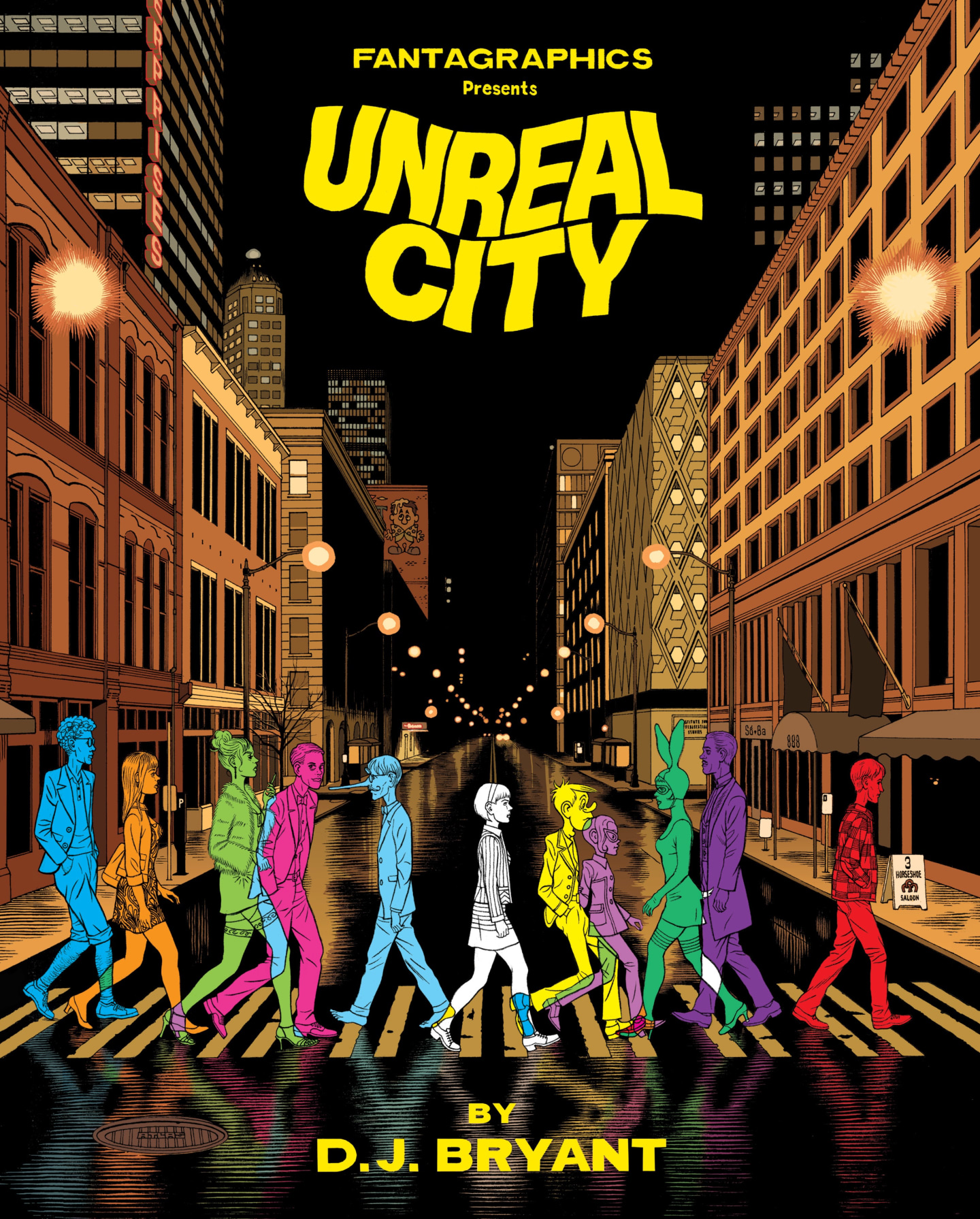 Fantagraphics 2017
Fantagraphics 2017
September 11, 2001 was my first day of 5th grade. A couple weeks later, cartoonist D.J. Bryant graduated The Art Institute Of Seattle. I know this because it is only one of three pieces of information he provides in the bio in the back of his debut book, Unreal City. I was a 10-year-old mini-New Yorker back then, so the fear-filled post-9/11 atmosphere became my everyday reality in the formative years that followed. The event affected D.J. tremendously too, he recently explained over the phone from Seattle. It also affected the surreal vignettes he wrote after graduating, the ones that would eventually become Unreal City.
The collection, which came out on cartoon holy grail publisher Fantagraphics in August, has been seven years in the making, and it shows. Its five freaky stories explore identity confusion, jealousy in relationships, as well as inexplicable time warps and Kafkaesque dream logic. “Evelyn Dalton-Hoyt,” which is based on an old cartoon by Spider-Man co-creator Steve Ditko, is a sex-filled romp with spooky pulp-fiction overtones. “Emordana, or The Inflection Of Nothing On The Visual Cortex,” reads like a cartoon version of a Beckett play. My favorite is “The Yellowknife Retrospective,” the collection’s most experimental, and only full-color story, because it reminds me of a lot of trippy dreams I’ve had set in museums. Still, anxiety flows through each panel, right up into the concluding story, “Objet D’Art,” a Vertigo-like tale of memory and obsession.
Influenced equally by Daniel Clowes and Edward Albee, Bryant’s work is meticulous and existential, a disorienting meditation on our political climate’s effect on art and the mind. Here, he talks about dreams, his process, and what might come next.
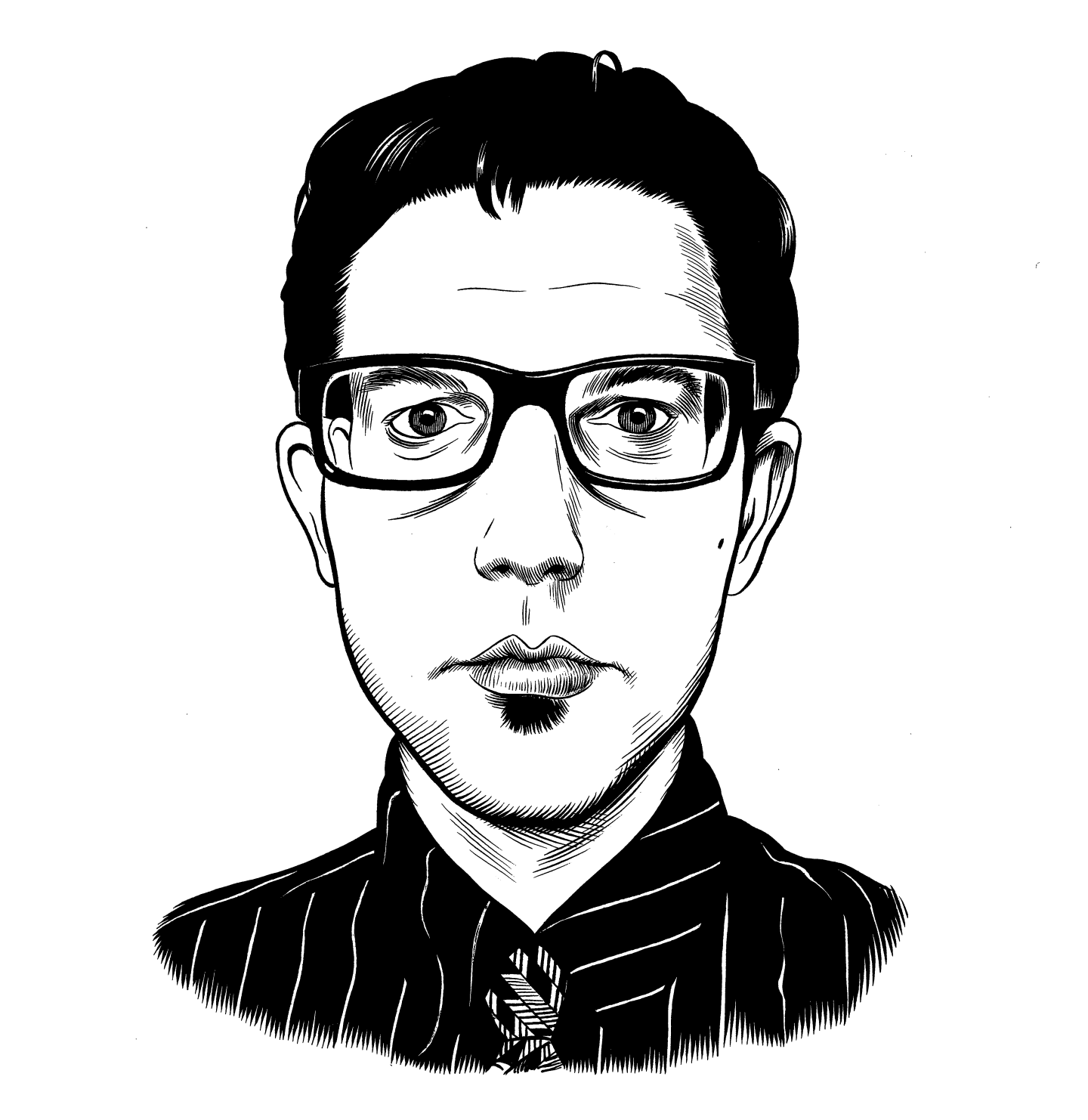 Self-portrait by D.J. Bryant
Self-portrait by D.J. Bryant
How did you get into cartooning?
D.J. BRYANT: I’ve been drawing from before I can remember. Even back when I was in kindergarten I was drawing my own Garfield comics. I didn’t zero in specifically on comics until I was in my teens. The lightbulb went off in middle school, that [cartooning] would be a good outlet for the kinds of things I was interested in doing. And I haven’t looked back from there!
You mention in your very brief bio that you graduated from The Art Institute Of Seattle right after the 9/11 attacks. What’s the significance of that?
The significance to me works on a few different levels. It’s something that’s kind of going on in the background of the book. Particularly in “Objet D’Art,” there’s an almost apocalyptic thing happening with this Torque 3 character. The book ends on this note of hope, in my opinion, but there’s still this thing hanging in the air.
I feel that that thing is very much with us in the world that we’re living in now. It was hanging over me when I put the bio together, and even as the book reached completion — I finished the very last page after Trump got elected. It was a similar feeling when I graduated from the Art Institute. I think it was a week before I graduated the 9/11 attacks happened. The graduation speech as they handed out the diplomas was completely about 9/11. That was all that was discussed. There was nothing about our futures, or how we would move forward. It was all about 9/11. To me [including that in the bio] seemed to put things in a historical context.
Who are your stylistic influences?
When I started [cartooning], Image Comics had started. A bunch of artists from Marvel left and founded Image, and the comics that they put out were all their own concepts and ideas. They were fairly knockoff-y things, like, their version of the X-Men, say, but starting off [reading] Image planted the seed early on that I could create my own book from scratch. Like, my goal wasn’t to draw Spider-Man, my goal was to take my own idea and turn that into a book and put it out there. I was reading the Image books by artists like Jim Lee and Todd McFarlane. Once that fire was lit, I would read everything I could. Dan Clowes and Jaime Hernandez also remain huge influences.
What about your literary heroes? I’m seeing a lot of Kafka and Beckett in these stories.
Love Kafka. Huge influence. I remember in high school, we had some typical book-reading assignment, but in the library they had The Metamorphosis, and I wanted to read that instead. One thing I did read was Krapp’s Last Tape; Beckett’s really interesting. I still have a lot more reading to do on him. Edward Albee, a playwright who’s sort of in Beckett’s vein, is a big influence.
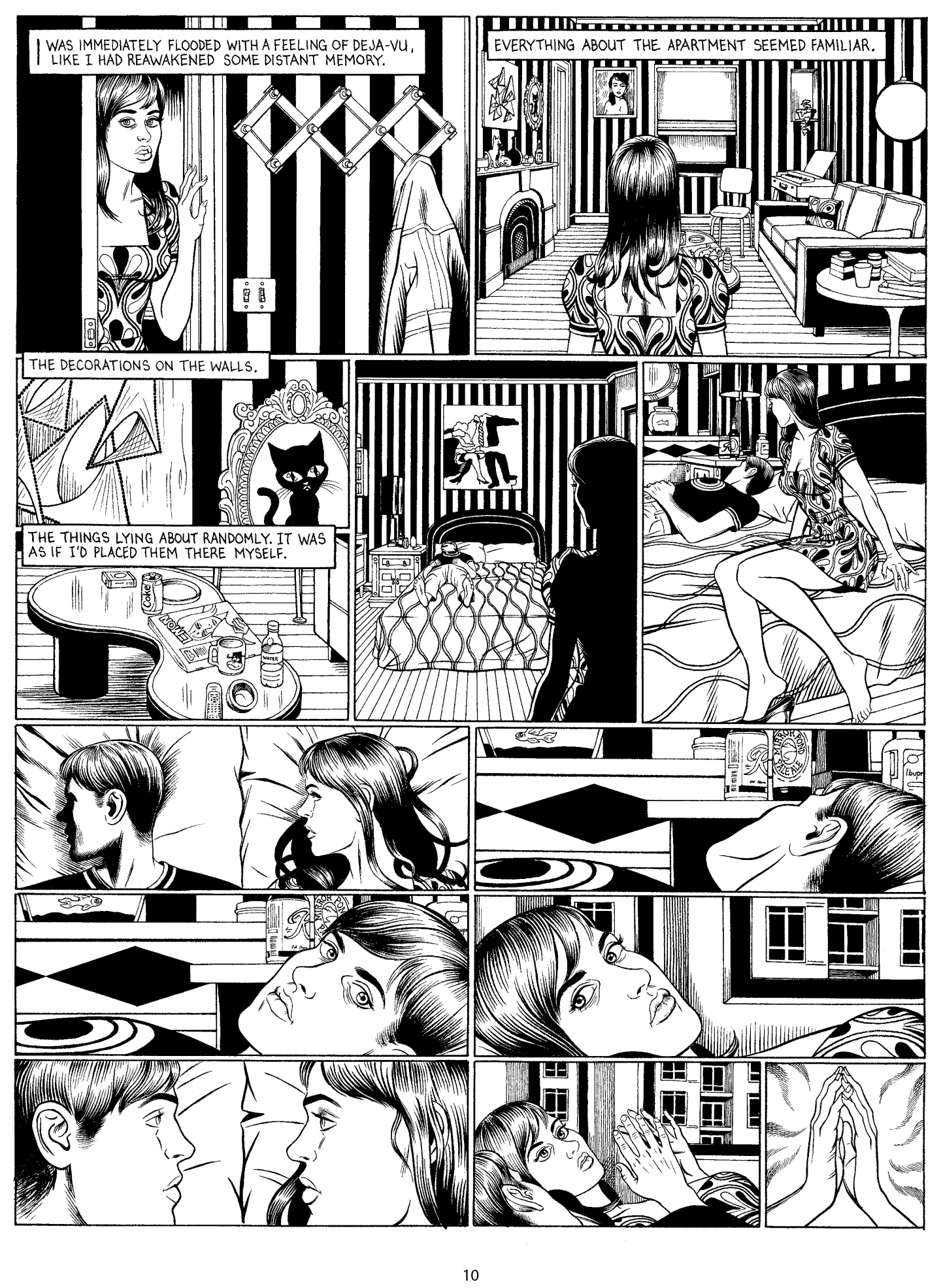 Excerpt from "Echoes Into Eternity"
Excerpt from "Echoes Into Eternity"
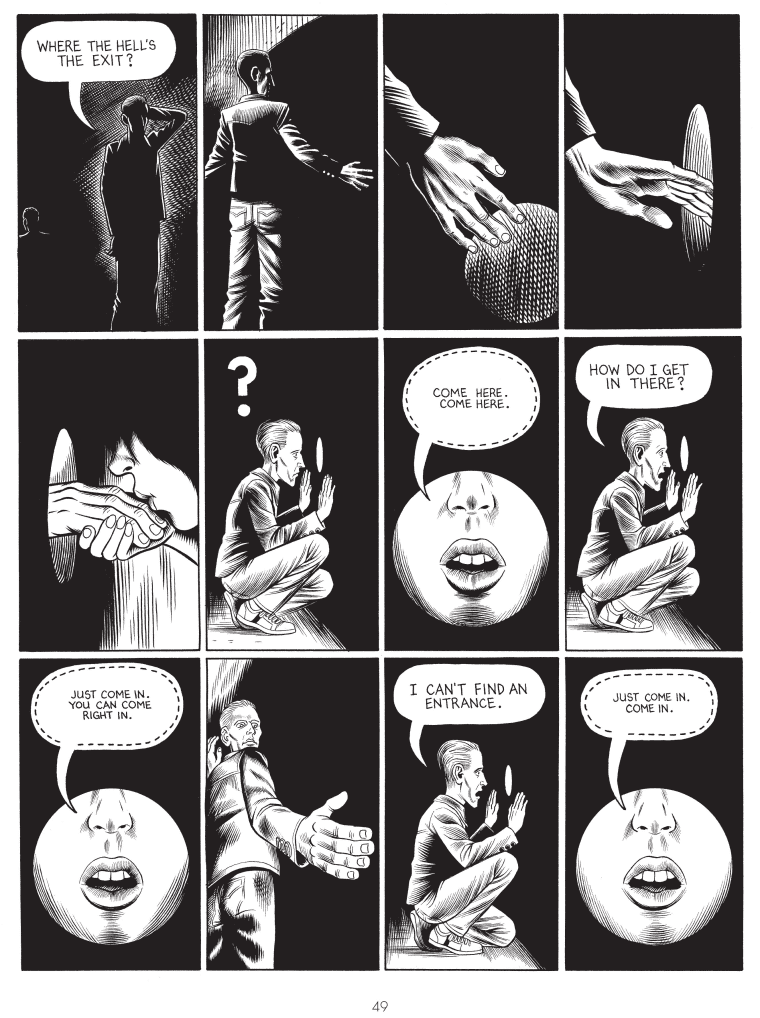 Excerpt from "Emordana"
Excerpt from "Emordana"

“I definitely feel like I’m going into a world when I do these stories. In fact, the city they’re in is a fictional city called Atlas City.”
So how did Unreal City come about?
The book wasn’t a straight line from A to B. Actually, the first story that was written and drawn was “Evelyn Dalton Hoight,” which is the only story that had been previously published. Fantagraphics put that out in their anthology MOME in 2010. After I finished “Evelyn,” I thought I would just go straight into a graphic novel. I had a few false starts there. Unreal City was something that just slowly came together, piece by piece, story by story. It took about 7 years to put this thing together. It just sort of accumulated.
Do you have vivid dreams?
When I was younger, my dreams were way more vivid [than they are now]. Dreams are a big influence. None of the stories are specifically dream-inspired, but I do remember having a dream that was about an art gallery. The idea of the gallery was that as you walked through it, you moved through time. That concept [for “The Yellowknife Retrospective”] came from [a different] dream, where if you walked into a space that someone had just been occupying, you would share a memory with that person. The dream was very different than the comic, but dream logic, and dreams in general, are a huge influence.
When you were composing these stories, did you think of them as a whole?
It didn’t start out that way. “Evelyn” I thought was a one-and-done, and I had started working on a couple other short stories. “Emordana” came next chronologically, but I only got a few pages in [at first] and had to move onto something else. I went from that to “Echoes Into Eternity,” which opens up the book. After I finished that, I went back to “Emordana.” As I finished up “Emordana,” it was clear that I was building this body of work that seemed to all go together, that seemed connected. Part of it was just the opportunity, because I’d been communicating with Eric Reynolds, who’s an editor at Fantagraphics. He really encouraged me to do a full book. So after “Emordana,” my idea of [the work] changed, and that’s when I started thinking about how these puzzle pieces would fit together. They’re all stories about relationships, they all deal with identity and perception of time, and they’re even connected by characters. They sort of belong in one world.
I’m really into the idea of books as worlds.
I definitely feel like I’m going into a world when I do these stories. In fact, the city they’re in is a fictional city called Atlas City. I never explicitly say it in the book, but if you look — like in “Objet D’Art” you see Elise’s Oregon ID, and it lists Atlas City as part of her address. It’s a city I made up when I was a teenager. It’s an amalgam of cities I’ve been to that came together.
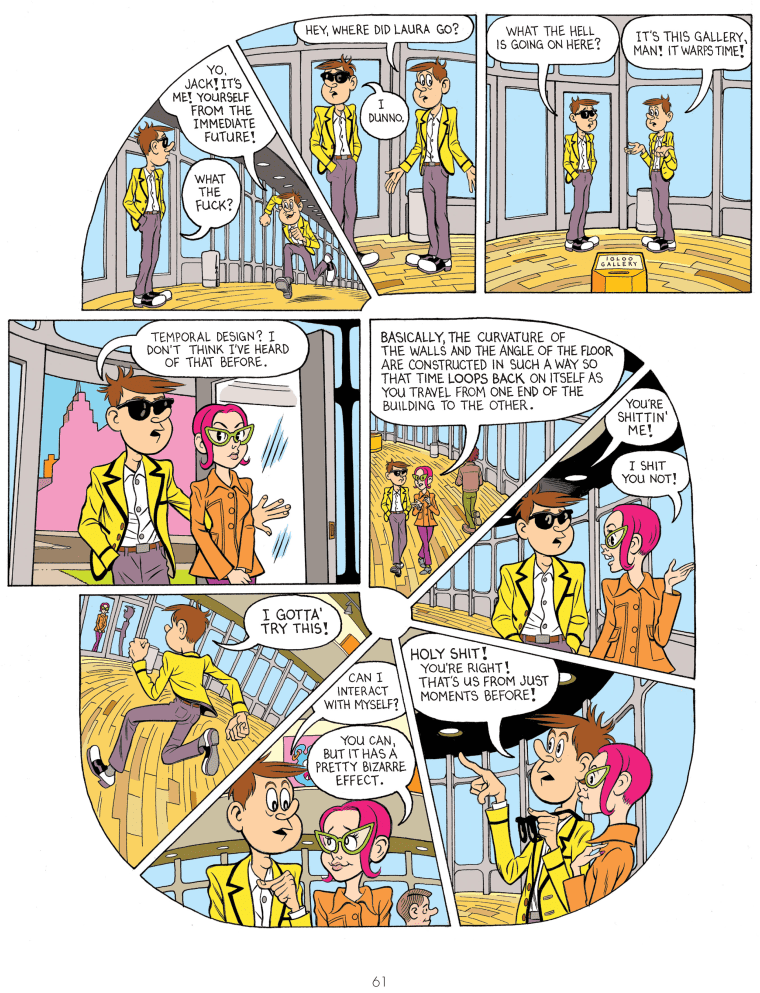 Excerpt from "The Yellowknife Retrospective"
Excerpt from "The Yellowknife Retrospective"

What is your process like?
The concepts themselves can come from all over the place. In Unreal City, every story started a slightly different way. I have ideas sort of floating here and there and then I start connecting, and once I get really excited about that idea I know it’s time to sit down with a script.
I see the drawing and the writing as two sides of my brain; the way I write is almost exactly the opposite of the way I draw. I write as fast as I possibly can. I don’t bother with any description or anything, it’s mostly just dialogue and plot. I do it very, very quick, without censoring or anything, just letting it come out. I think that is where the dreamlike quality of [the stories] comes from. And that’s the blueprint for what the story will be. From there, I very meticulously take this nebulous thing that came from thin air and try to construct it with these sharp lines. I very carefully draw every panel, and work on building that whole world.
To bring it back to political climate’s effect on art, how is the Trump presidency treating you? Do you have any ideas rumbling?
I don’t see how any artist out there could not be grappling with [Trump]. You have to talk about it. Absolutely. Art is a reflection of the world you’re living in. I finished last page [of Unreal City] right when Trump got elected, and it put the book in a whole different context for me. We really need to wake up and pay attention to these things because it is a crisis situation. So it certainly affects the way I look at the work, and moving forward.
Politics is in everything, and it certainly is in comics. That’s part of why we do this. It is a tool of communication. Of course it plays into politics. I would say being a cartoonist is as important now as it’s ever been. As an artist, [you have to] really understand that responsibility, that your voice is out there and you can make positive change with that voice.